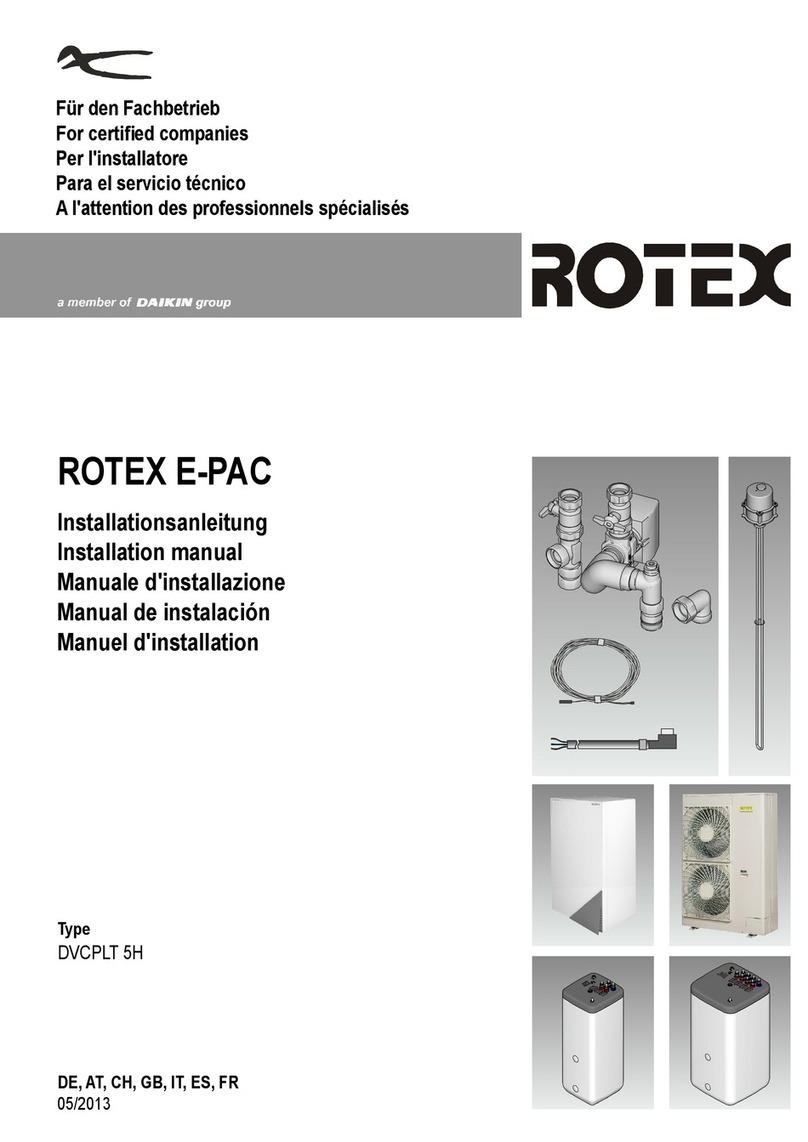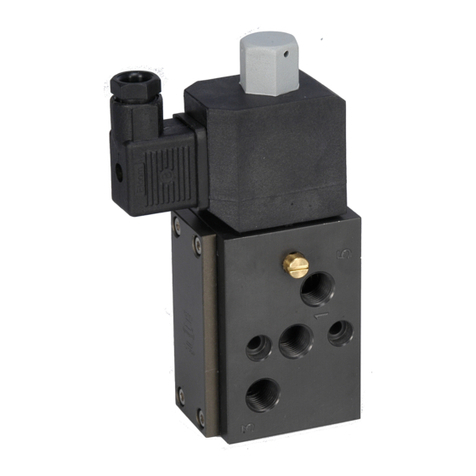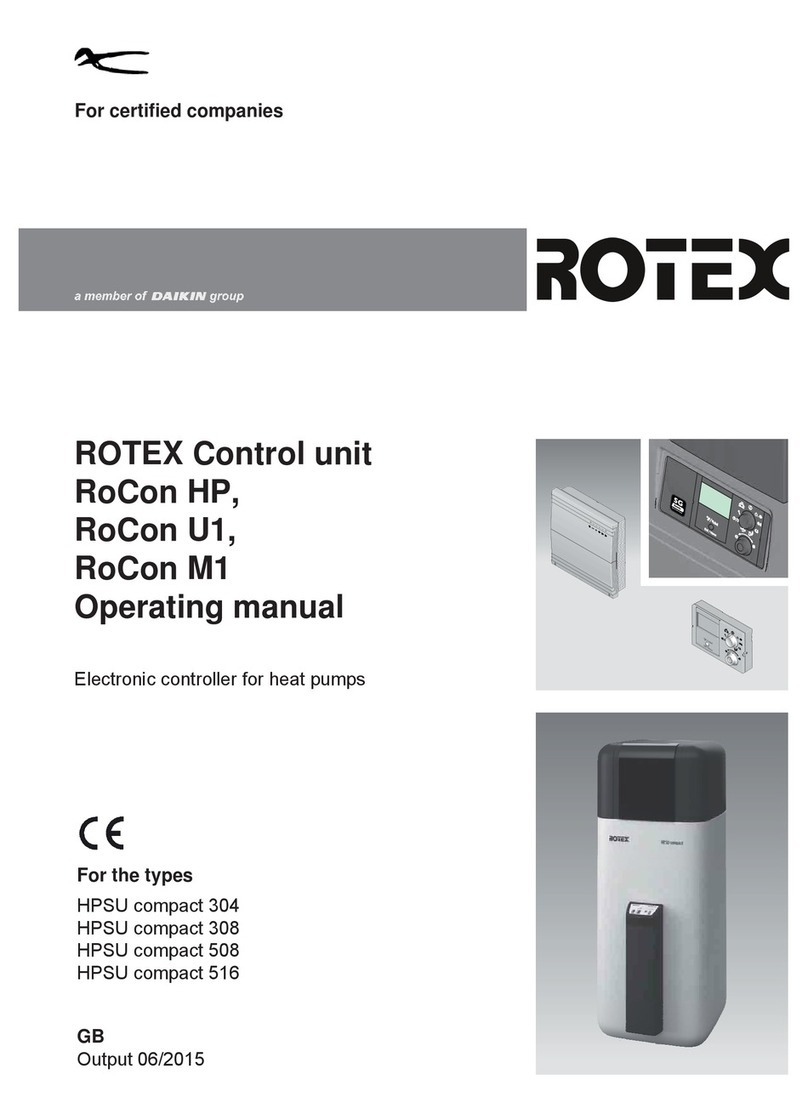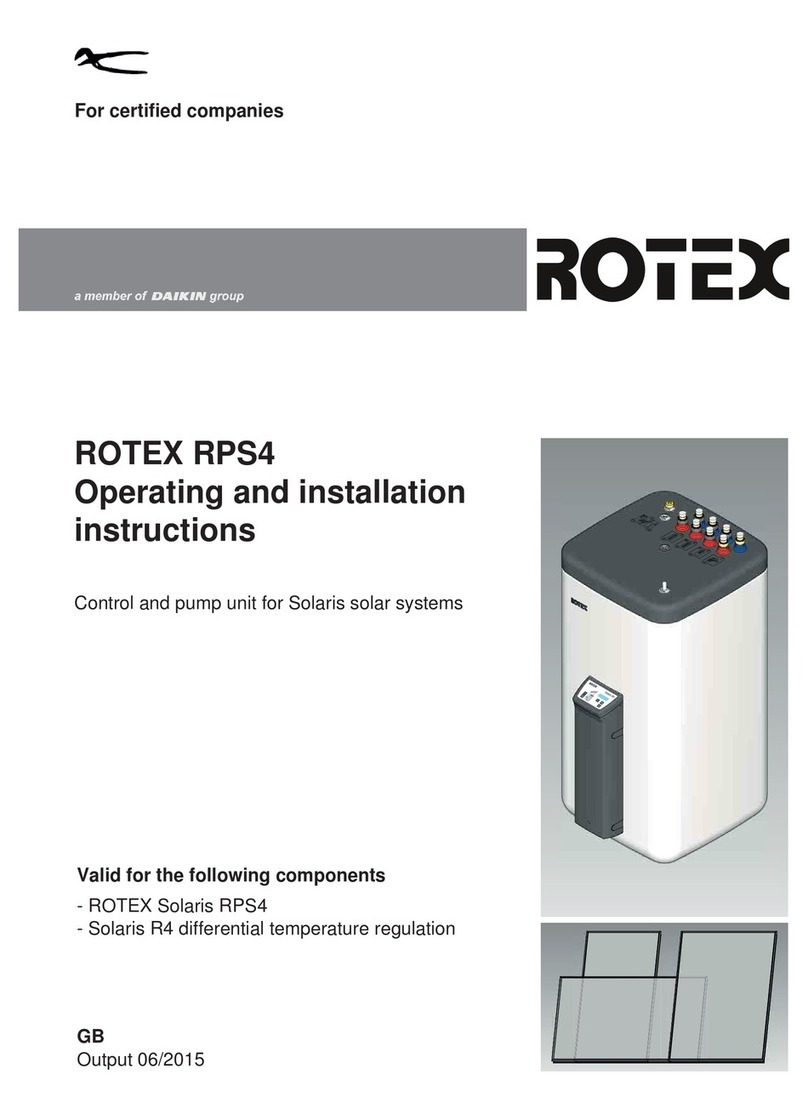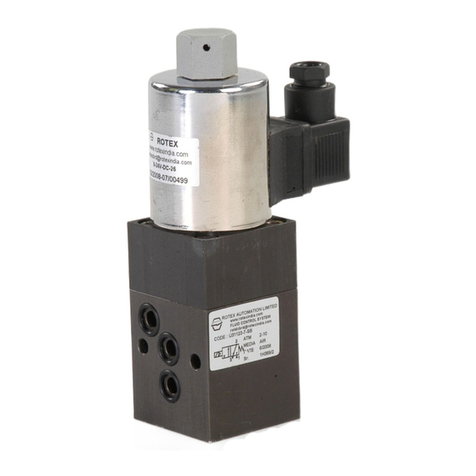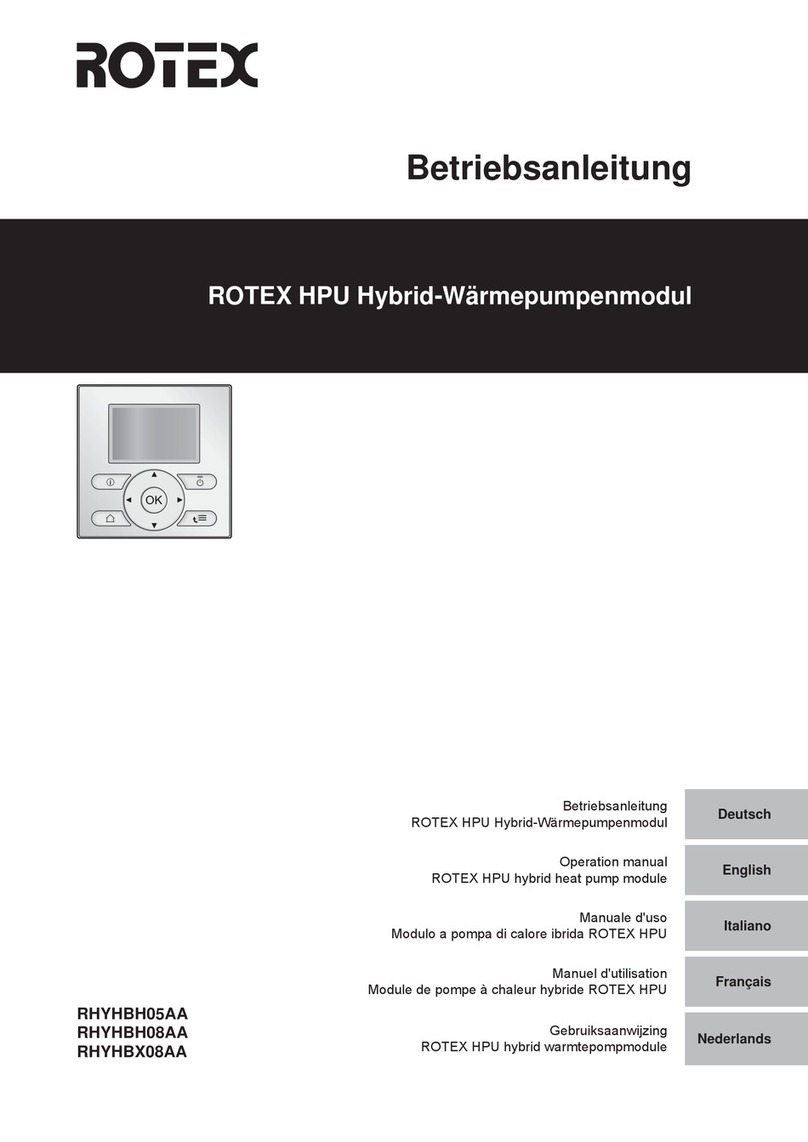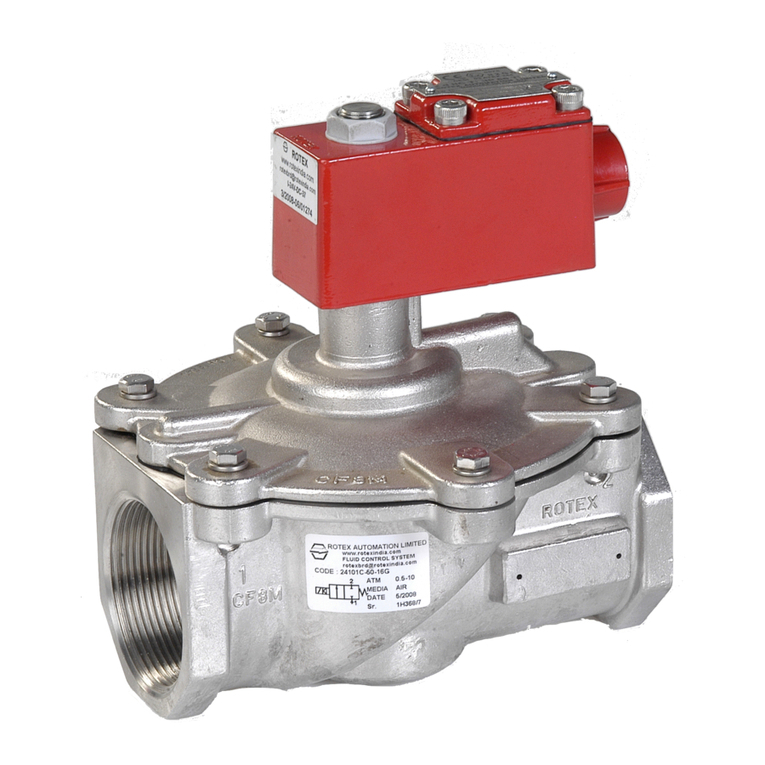
List of contents
2FA ROTEX RoCon mb • 09/2017
1 Safety . . . . . . . . . . . . . . . . . . . . . . . . . . . . . . . 4
1.1 Refer to the manual . . . . . . . . . . . . . . . . . . . . . . . 4
1.2 Warning signs and explanation of symbols . . . . . 4
1.2.1 Meaning of the warnings . . . . . . . . . . . . . . . . . . . . . . 4
1.2.2 Validity. . . . . . . . . . . . . . . . . . . . . . . . . . . . . . . . . . . . 5
1.2.3 Order number . . . . . . . . . . . . . . . . . . . . . . . . . . . . . . 5
1.2.4 Handling instructions. . . . . . . . . . . . . . . . . . . . . . . . . 5
1.3 Avoiding danger . . . . . . . . . . . . . . . . . . . . . . . . . . 5
1.4 Use as intended . . . . . . . . . . . . . . . . . . . . . . . . . . 5
2 Product description. . . . . . . . . . . . . . . . . . . . 6
3 Operation . . . . . . . . . . . . . . . . . . . . . . . . . . . . 7
3.1 General . . . . . . . . . . . . . . . . . . . . . . . . . . . . . . . . 7
3.2.1 Display . . . . . . . . . . . . . . . . . . . . . . . . . . . . . . . . . . . 7
3.2.2 Controls. . . . . . . . . . . . . . . . . . . . . . . . . . . . . . . . . . . 8
3.3 Operating concept . . . . . . . . . . . . . . . . . . . . . . . . 9
3.4 Basic functions and operating modes . . . . . . . . 10
3.4.1 System information (Info) . . . . . . . . . . . . . . . . . . . . 10
3.4.2 Setting the operating mode . . . . . . . . . . . . . . . . . . .12
3.4.3 Temperature setting of daytime room temperature . 14
3.4.4 Temperature setting of setback mode. . . . . . . . . . . 14
3.4.5 Temperature setting of hot water generation . . . . . 14
3.4.6 Unscheduled hot water preparation . . . . . . . . . . . .14
3.4.7 Switching time program. . . . . . . . . . . . . . . . . . . . . . 14
3.4.8 System settings. . . . . . . . . . . . . . . . . . . . . . . . . . . . 17
3.4.9 Terminal function. . . . . . . . . . . . . . . . . . . . . . . . . . . 17
3.4.10 Operation with glycol. . . . . . . . . . . . . . . . . . . . . . . . 18
3.4.11 Whisper mode . . . . . . . . . . . . . . . . . . . . . . . . . . . . . 18
3.4.12 Smart Grid (SG) . . . . . . . . . . . . . . . . . . . . . . . . . . . 19
3.4.13 EHS emergency operation . . . . . . . . . . . . . . . . . . . 19
3.5 Special functions . . . . . . . . . . . . . . . . . . . . . . . . 20
3.5.1 Manual operation . . . . . . . . . . . . . . . . . . . . . . . . . .20
3.5.2 3-way switching valves reference travel. . . . . . . . . 20
3.6 Special system settings . . . . . . . . . . . . . . . . . . . 21
3.6.1 Access rights (technician code) . . . . . . . . . . . . . . . 21
3.6.2 Heat slope. . . . . . . . . . . . . . . . . . . . . . . . . . . . . . . . 21
3.6.3 Cooling slope . . . . . . . . . . . . . . . . . . . . . . . . . . . . .22
3.6.4 Weather-dependent T-HS control . . . . . . . . . . . . . .23
3.6.5 Frost protection function . . . . . . . . . . . . . . . . . . . . . 23
3.6.6 Interlink function . . . . . . . . . . . . . . . . . . . . . . . . . . . 24
3.6.7 Additional alternative heat generator . . . . . . . . . . . 24
3.6.8 Heating support . . . . . . . . . . . . . . . . . . . . . . . . . . . 25
3.6.9 Special function: switching contacts . . . . . . . . . . . . 25
3.6.10 Air purge . . . . . . . . . . . . . . . . . . . . . . . . . . . . . . . . . 25
3.6.11 Anti-legionella system . . . . . . . . . . . . . . . . . . . . . . .26
3.6.12 Resetting to factory settings (reset) . . . . . . . . . . . . 26
3.6.13 Screed program . . . . . . . . . . . . . . . . . . . . . . . . . . .27
3.6.14 Relay test . . . . . . . . . . . . . . . . . . . . . . . . . . . . . . . . 29
3.6.15 Settings for optional circulation pump . . . . . . . . . . . 29
3.6.16 Remote control via Internet . . . . . . . . . . . . . . . . . . . 30
4 Initial start-up. . . . . . . . . . . . . . . . . . . . . . . . 31
4.1 Fundamental aspects of the IDs and
authorisations in the RoCon system . . . . . . . . . 31
4.2 Operating Support during 1st. Commissioning
and during System Extensions . . . . . . . . . . . . . 32
4.3 Commissioning ROTEX
HPSU monobloc compact . . . . . . . . . . . . . . . . . 33
4.3.1 Assigning the terminal ID on the RoCon B1 control
panel of the ROTEX HPSU monobloc compact . . . 33
4.4 Putting optional RoCon system components
into operation . . . . . . . . . . . . . . . . . . . . . . . . . . 33
4.4.1 Mixer module RoCon M1. . . . . . . . . . . . . . . . . . . . .33
4.4.2 RoCon U1 room station. . . . . . . . . . . . . . . . . . . . . .34
4.4.3 Allocating the RoCon M1 mixing module to a heat
generator . . . . . . . . . . . . . . . . . . . . . . . . . . . . . . . . .35
4.4.4 Master RoCon function . . . . . . . . . . . . . . . . . . . . . .35
4.4.5 Caretaker function. . . . . . . . . . . . . . . . . . . . . . . . . .35
5 Parameter overview. . . . . . . . . . . . . . . . . . . 36
5.1 For first commissioning or resetting to factory
settings . . . . . . . . . . . . . . . . . . . . . . . . . . . . . . . 36
5.2 After first commissioning/After successful basic
configuration . . . . . . . . . . . . . . . . . . . . . . . . . . . 37
5.2.1 Rotary switch setting: Configuration . . . . . . . . . . . .37
5.2.2 Rotary switch setting: DHW Install . . . . . . . . . . . . .38
5.2.3 Rotary switch setting: Operating Mode . . . . . . . . .38
5.2.4 Rotary switch setting: Set Temp Day . . . . . . . . . . .38
5.2.5 Rotary switch setting: Set Temp Night . . . . . . . . . .38
5.2.6 Rotary switch setting: DHW Set Temp . . . . . . . . . .38
5.2.7 Rotary switch setting: Time Program . . . . . . . . . . .38
5.2.8 Rotary switch setting: Remote Param . . . . . . . . . .38
5.2.9 Rotary switch setting: Info . . . . . . . . . . . . . . . . . . .38
5.2.10 Exit key: Special function . . . . . . . . . . . . . . . . . . . .38
5.3 Parameter levels for the
RoCon M1 mixer module . . . . . . . . . . . . . . . . . 38
5.3.1 Rotary switch setting: Info . . . . . . . . . . . . . . . . . . .38
5.3.2 Rotary switch setting: Operating Mode . . . . . . . . .38
5.3.3 Rotary switch setting: Set Temp Day . . . . . . . . . . .38
5.3.4 Rotary switch setting: Set Temp Night . . . . . . . . . .38
5.3.5 Rotary switch setting: DHW Set Temp . . . . . . . . . .38
5.3.6 Rotary switch setting: DHW Install . . . . . . . . . . . . .38
5.3.7 Rotary switch setting: Time Program . . . . . . . . . . .39
5.3.8 Rotary switch setting: Remote Param . . . . . . . . . .39
5.3.9 Rotary switch setting: Configuration . . . . . . . . . . . .39
6 Parameter settings . . . . . . . . . . . . . . . . . . . 40
6.1 Explanation of the parameter tables . . . . . . . . . 40
6.2 Rotary switch setting: Configuration . . . . . . . . . 40
6.2.1 "Setup" level . . . . . . . . . . . . . . . . . . . . . . . . . . . . . .40
6.2.2 "System Configuration" level . . . . . . . . . . . . . . . . . .44
6.2.3 "HC Configuration" level . . . . . . . . . . . . . . . . . . . . .45
6.2.4 "DHW Configuration" level . . . . . . . . . . . . . . . . . . .47
6.3 Rotary switch setting: DHW Install . . . . . . . . . . 47
6.4 Rotary switch setting: Operating Mode . . . . . . 48
6.5 Rotary switch setting: Set Temp Day . . . . . . . . 48
6.6 Rotary switch setting: Set Temp Night . . . . . . . 48
6.7 Rotary switch setting: DHW Set Temp . . . . . . . 48
6.8 Rotary switch setting: Time Program . . . . . . . . 49
6.9 Rotary switch setting: Remote Param . . . . . . . 49
6.10 Rotary switch setting: Info . . . . . . . . . . . . . . . . 49
6.11 Exit key: Special function . . . . . . . . . . . . . . . . . 50
6.12 "Basic Configuration" parameter level. . . . . . . . 51
6.13 Parameter levels of the
RoCon M1 mixer module . . . . . . . . . . . . . . . . . 51
6.13.1 Rotary switch setting:
Configuration , "Setup" level . . . . . . . . . . . . . . . . . .52
6.13.2 Rotary switch setting:
Configuration , "Mixer Config" level. . . . . . . . . . . . .53
7 Errors, malfunctions and messages . . . . . 55
7.1 Recognising errors, correcting malfunctions . . . 55
7.1.1 Current error display . . . . . . . . . . . . . . . . . . . . . . . .55
7.1.2 Reading out the protocol . . . . . . . . . . . . . . . . . . . . .55
7.1.3 Troubleshooting. . . . . . . . . . . . . . . . . . . . . . . . . . . .55
